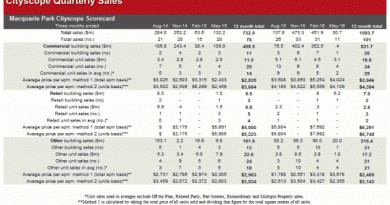Claiming Depreciation for Investment Properties Explained
updated 15th October 2016
Claiming depreciation
increases an investor’s cash flow as they’re able to realise all allowable deductions against the income they receive from their investment property, under the Income Assessment Act 1997
- The land
- The building – Division 43, Building Write-off Allowance
- The plant and equipment – Division 40 Plant and Equipment Allowance
Subject to the construction date, these deductions may be claimed immediately against the capital outlay, excluding the land value and landscaping (which isn’t depreciable).
The relevant construction commencement dates for residential buildings are:
Depreciation rate
Before 1 July 1985 Nil
18 July 1985 – 15 September 1987 4%
After 15 September 1987 2.5%
There are different dates for the construction of external structural improvements, such as fences, gates, paving, and retaining walls:
Depreciation rate
Before 27 February 1992 Nil
After 27 February 1992 2.5%
However, regardless of the date of construction, property investors are able to claim for depreciation under Division 40, Plant and Equipment Allowance.
Plant and equipment
When plant items such as carpets, ovens, cook tops, dishwashers, drapes, blinds, heaters and hot water systems have been purchased for the sole purpose of generating rental income, the cost or value can be written off over its ‘effective life’ as an eligible tax deduction. The ‘effective life’ is the length of time it can be used for producing rental income.
At the time of purchase of the investment property, all plant items can be valued by a quantity surveyor and given an effective life from the date of settlement.
Investors should assess whether they feel the potential value of the plant, and therefore the potential depreciable claim, will outweigh the cost of having a quantity surveyor value the plant and prepare the subsequent depreciation schedule.
“Even if you haven’t been claiming this eligible deduction as yet, there’s an allowance in the legislation for lodging an amended assessment to account for the unclaimed depreciation for a period of up to four years,” says Nad Nadana-Sabesan, Opteon’s national manager of quantity surveying.
Methods of depreciation
In preparing the tax depreciation schedule, two methods of depreciation can be used:
diminishing value and prime cost, with the choice of method claimed being at the discretion of the property investor and their accountant.
Any schedule prepared should summarise the yearly claims under both depreciation methods, and include a detailed breakdown of Division 40 and Division 43 values, highlight the valuation methodology used, and come with a certification of compliance.
Should you claim depreciation?
Claiming depreciation increases an investor’s cash flow as they’re able to realise all allowable deductions against the income they receive from their investment property, under the Income Assessment Act 1997.
Nadana-Sabesan believes that investors often overlook the eligible deduction for depreciation of Building Write-off Allowance and Plant and Equipment Allowances, when claiming deductions against rental income received from an investment property.
“Our research shows that many accountants aren’t aware of the potential for these eligible deductions, and their clients are therefore only claiming for ‘up keep’ costs incurred during a relevant financial year,” says Nadana-Sabesan.
“More often than not, property investors only start claiming eligible deductions for depreciation once they incur the cost of replacement items,” he says. “For example, when they put in a new hot water service or new carpet, or when they carry out capital/structural improvements, like a renovated kitchen or bathroom. Little do they know that there may have been an allowance for the depreciation of the original construction costs, or the purchase price of the property,” he adds.
How can you get a depreciation schedule?
Only a qualified quantity surveyor can prepare depreciation schedules on behalf of an investor.
“The legislation is quite prescriptive and clearly states that a quantity surveyor should have the skill and experience within the construction and building industry to assess the cost and value of a building and its plant,” says Sugars.
“Accordingly, they’re able to prepare a tax depreciation schedule pursuant to the requirements of the Australian Taxation Office.”
This article has been republished with permission from Your Investment Property magazine. Try our Loan Repayment Calculator and find the best repayment strategy for you.





